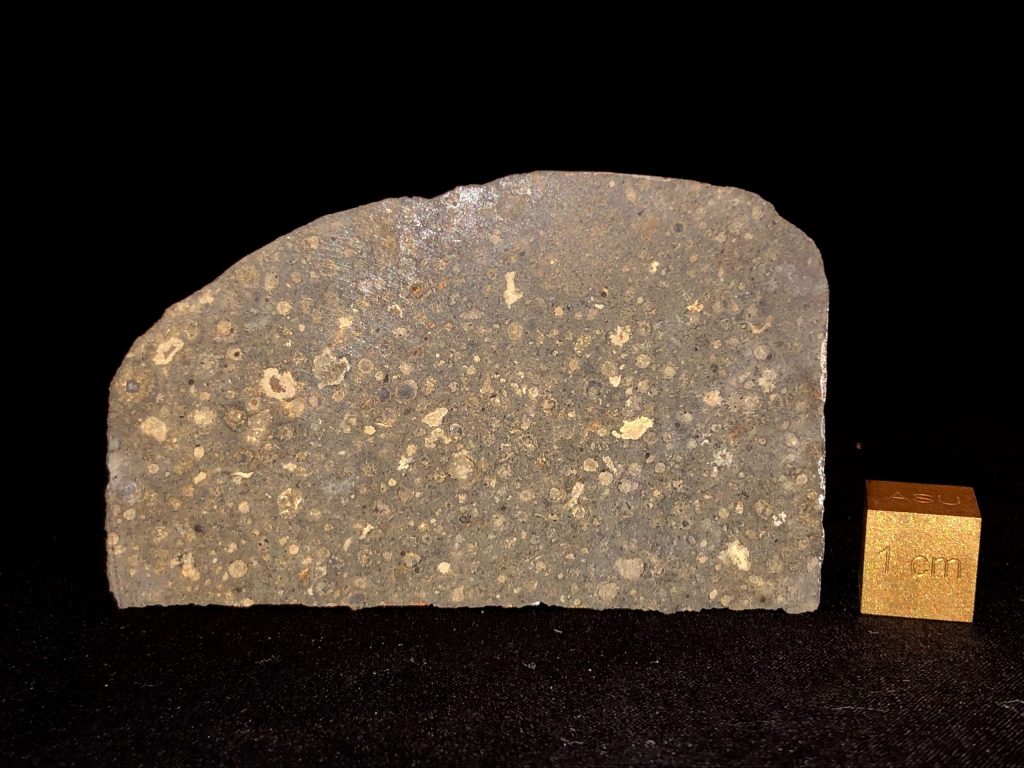ICGL alumn Dr. Zachary Torrano, Assistant Research Scientist Dr. Jemma Davidson, and School of Earth and Space Exploration Director Prof. Meenakshi Wadhwa are co-authors of a new paper recently published in the journal Meteoritics & Planetary Science.
The article, “A reclassification of Northwest Africa 2900 from CV3 to CK3 chondrite”, re-evaluates the classification of Northwest Africa (NWA) 2900, a carbonaceous chondrite found in 2004 within the North African Sahara, while also refining the classification criteria for Vigarano-like (CV) and Karoonda-like (CK) carbonaceous chondrite meteorites.
Torrano studied the isotopic compositions of calcium-aluminum-rich inclusions (CAIs) in CV and CK chondrites during his doctoral thesis research at ASU and noticed that one of the meteorites he analyzed may have been misclassified.

“I approached Jemma about investigating the petrology of NWA 2900 in more detail because I knew that she had experience studying CV and CK chondrites,” says Torrano.
As a meteorite petrologist, Davidson's interests include refining the criteria by which chondrites are classified and understanding the differences between groups; she has researched CV and CK chondrites for over a decade. The study was a perfect collaboration of interests and skillset.
“Refining meteorite classifications might seem mundane but it’s actually a very important, fundamental endeavor as meteorite classifications are the foundation upon which sample science studies are built,” says Davidson. “An inaccurate classification can lead to a cascade of errors further down the line when researchers try to compare the characteristics of different meteorite groups.”
The authors performed detailed examinations of NWA 2900 and compared with data previously reported for CK and CV chondrites. Based on their findings, they propose that NWA 2900 be reclassified as a CK3 chondrite.
“This work not only reclassified NWA 2900, it also provided an updated framework within which future researchers can distinguish between CV and CK chondrites,” says Davidson. “These meteorite groups are very similar and often get mistaken for one another. This study – which builds on decades of prior work by expert petrologists in the field – will be invaluable in helping researchers distinguish between CV and CK chondrites.”
Read the full paper here, and read more about Torrano’s research here.
Read more about Davidson’s research here and here.



